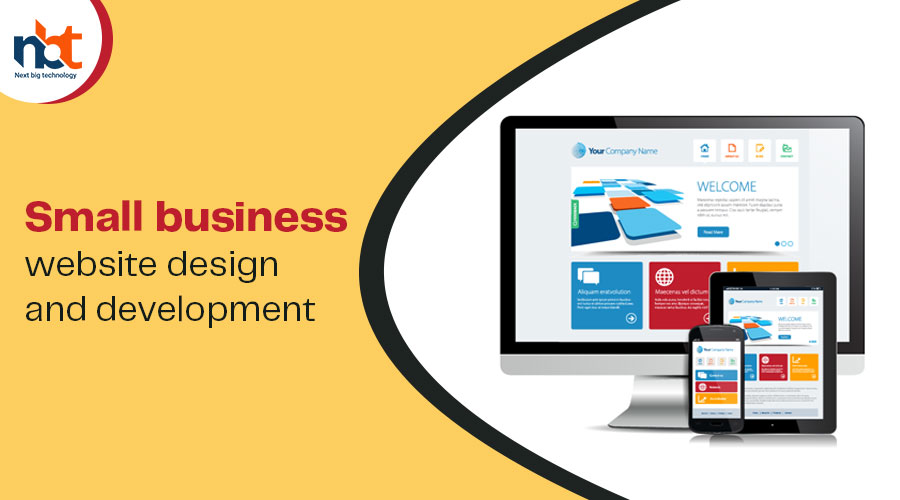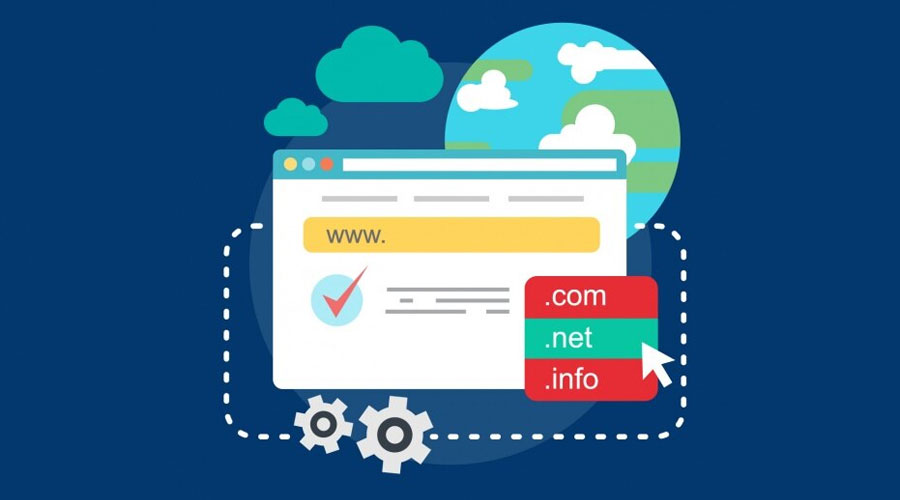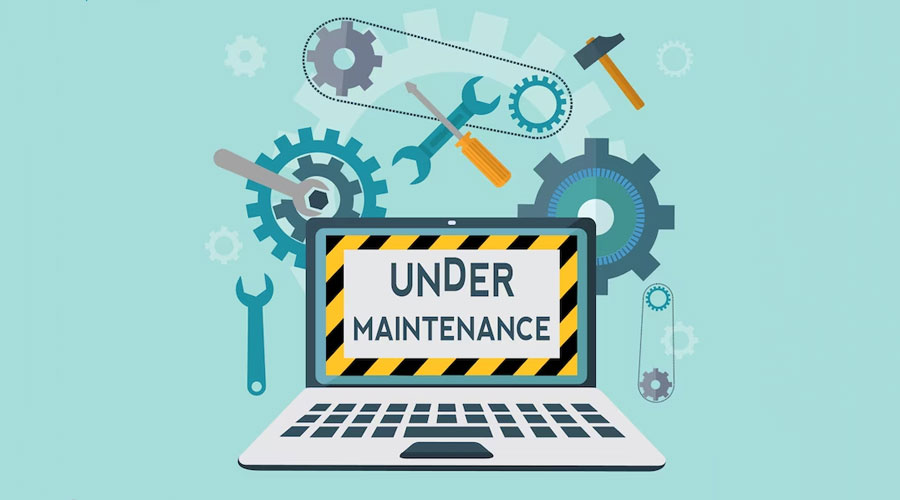Table of Contents
The Importance of Small Business Websites
In today’s fast-paced, digital-centric world, the importance of small business websites cannot be overstated. These online platforms serve as the digital storefronts for countless businesses, enabling them to engage with potential customers, build trust, and expand their reach far beyond their local communities. Let’s delve deeper into why small business websites are a game-changer:
- First Impressions Matter: Your website is often the first interaction a potential customer has with your business. It serves as a visual representation of your brand and sets the tone for their entire experience. A professional, well-designed website conveys trust and credibility.
- Accessibility 24/7: Unlike brick-and-mortar stores with set operating hours, your website is accessible 24 hours a day, 7 days a week. This means customers can visit, explore, and make purchases at their convenience, regardless of time zones or holidays.
- Global Reach: A physical store can only reach customers within a specific geographical area. In contrast, a website has the potential to reach a global audience. It allows even the smallest of businesses to tap into a much broader market.
- Cost-Effective Marketing: Traditional advertising methods like print media and television ads can be costly, especially for small businesses with limited budgets. A website provides an affordable and efficient means of marketing your products or services to a wide audience.
- Customer Convenience: Online shopping is all about convenience. A well-structured website with easy navigation, detailed product information, and a secure checkout process enhances the shopping experience, which can lead to higher sales and customer loyalty.
- Establishing Trust and Credibility: A professionally designed website that includes customer testimonials, product reviews, and business history builds trust and credibility. Visitors are more likely to make a purchase or contact you if they feel confident in your offerings.
- Competitive Edge: In a competitive market, having a website is often the differentiating factor between you and your competitors. It allows you to showcase your unique value propositions and stand out in the crowd.
- Data and Insights: Websites provide valuable data and insights. You can track visitor behavior, gather demographic information, and measure the effectiveness of your marketing efforts. This data-driven approach helps in making informed business decisions.
- Customer Engagement: Through blogs, newsletters, and social media integration, you can engage with your customers on a regular basis. This ongoing interaction helps in building a loyal customer base and encourages repeat business.
- Online Sales: For businesses with physical products, e-commerce capabilities on your website open up a whole new revenue stream. Online sales can be a significant source of income, especially if you cater to a niche market.
- Showcasing Your Portfolio: For service-based businesses, a website is a digital portfolio that allows you to showcase your work and demonstrate your expertise. It’s an opportunity to impress potential clients with what you’ve accomplished.
- Educational Resource: Your website can be a valuable resource for educating your audience. You can provide informative blog posts, FAQs, and downloadable resources that help customers understand your products or services better.
Choosing the Right Domain Name
In today’s digital age, having a strong online presence is essential for small businesses to thrive. Your website is often the first point of contact between your business and potential customers. It’s where they learn about your products or services, your values, and what sets you apart from the competition. This article will explore the importance of small business website design and development, providing insights and tips to create a site that not only looks good but also performs exceptionally well. Additionally, we will discuss the crucial aspect of choosing the right domain name for your small business website.
Chapter 1: The Significance of a Small Business Website
In the modern business landscape, a website serves as the face of your company. Here’s why a small business website is crucial:
1.1 Credibility and Trust
A professional website instills confidence in potential customers. It’s a platform where you can showcase your expertise, customer reviews, and business history, all of which help build trust.
1.2 Accessibility
Your website is accessible 24/7, providing potential customers with the convenience of browsing your products or services at any time. This can lead to increased sales and brand visibility.
1.3 Market Expansion
A website allows your small business to expand its market reach beyond your immediate physical location. You can reach customers globally, not just locally.
Chapter 2: The Elements of a Successful Small Business Website
Now that we understand the importance of a small business website let’s delve into the key elements that make a website successful:
2.1 User-Friendly Design
Your website should have an intuitive and user-friendly design. Navigation menus, search bars, and call-to-action buttons should be easy to find and use.
2.2 Mobile Responsiveness
In an era where most internet traffic comes from mobile devices, a responsive design is vital. Your website should adapt seamlessly to various screen sizes.
2.3 Compelling Content
High-quality, engaging content is the backbone of your website. It should be well-written, informative, and relevant to your audience.
2.4 Visual Appeal
First impressions matter. A visually appealing website design can captivate your audience. Use high-resolution images and a consistent color scheme to create an attractive website.
2.5 Page Load Speed
A slow website can drive visitors away. Optimize your website’s performance by reducing unnecessary scripts, images, and using content delivery networks (CDNs).
Chapter 3: Small Business Website Development
Creating a website involves more than just design. The development phase is equally crucial:
3.1 Choose the Right Platform
Select a website building platform that aligns with your business needs. Options include WordPress, Wix, Shopify, and more. Each has its own set of features and capabilities.
3.2 Domain Name and Hosting
Select a domain name that reflects your brand and is easy to remember. Choose a reliable web hosting service to ensure your website is always accessible.
3.3 Website Security
Website security is paramount. Implement an SSL certificate to secure data transmission, use strong passwords, and keep your platform and plugins up to date to protect against vulnerabilities.
3.4 E-commerce Integration
If your small business involves selling products or services online, ensure your website has e-commerce functionality, including a secure payment gateway.
Chapter 4: SEO for Small Business Websites
To stand out in the competitive digital landscape, search engine optimization (SEO) is essential:
4.1 Keyword Research
Identify relevant keywords for your industry and incorporate them naturally into your website’s content.
4.2 On-Page SEO
Optimize title tags, meta descriptions, and headings to improve search engine ranking.
4.3 High-Quality Backlinks
Build high-quality backlinks from authoritative websites to boost your site’s authority.
4.4 Content Marketing
Regularly update your website with fresh, informative content that’s relevant to your audience. Blog posts, articles, and videos can all contribute to better SEO.
Chapter 5: User Experience (UX)
An exceptional user experience is key to keeping visitors engaged and converting them into customers:
5.1 Clear Call to Action
Guide visitors on what action to take next, whether it’s making a purchase, signing up for a newsletter, or contacting you.
5.2 Load Time Optimization
Ensure that your website loads quickly to prevent visitors from leaving due to slow load times.
5.3 Mobile Optimization
Given the increasing use of mobile devices, optimizing your site for mobile is essential.
5.4 A/B Testing
Conduct A/B tests to fine-tune your website’s elements and improve user experience over time.
Chapter 6: Content Strategy
Effective content is at the heart of your website’s success. Here’s how to create and implement a content strategy:
6.1 Understand Your Audience
Know your target audience’s needs, problems, and preferences to tailor your content accordingly.
6.2 Consistency
Consistency in posting content is crucial for retaining and engaging your audience.
6.3 Diversify Content
Mix up your content types, including blog posts, videos, infographics, and more, to appeal to different learning styles.
6.4 Content Calendar
Plan and schedule your content to maintain a regular posting frequency.
Chapter 7: Measuring Success
To ensure your website is performing at its best, you need to track and measure its success:
7.1 Analytics
Use tools like Google Analytics to monitor website traffic, user behavior, and conversion rates.
7.2 Conversion Tracking
Set up goals and conversion tracking to measure how well your website is achieving its objectives.
7.3 A/B Testing
Continuously test different elements to see what resonates best with your audience.
7.4 Feedback and Improvement
Listen to user feedback and make improvements based on their suggestions.
Chapter 8: Choosing the Right Domain Name
Your domain name is the online address of your business. It plays a pivotal role in your website’s branding and accessibility. Here’s how to choose the right domain name for your small business:
8.1 Reflect Your Brand
Your domain name should mirror your business name or brand. This consistency helps customers remember your website and brand more easily.
8.2 Keep It Simple
A short, simple, and easy-to-spell domain name is more likely to be remembered and typed correctly. Avoid using complex or confusing words.
8.3 Avoid Hyphens and Numbers
Hyphens and numbers can be confusing and are often misunderstood or forgotten. Stick to letters to keep your domain name clear.
8.4 Use Keywords
Incorporate relevant keywords in your domain name if possible. This can improve your website’s search engine ranking and help customers find you more easily.
8.5 Check Availability
Before settling on a domain name, ensure it’s available for registration. You can use domain registration services to search for and secure your chosen domain.
Selecting a Hosting Provider
Choosing the right hosting provider is a critical decision in the website development process. Your hosting provider affects your website’s speed, reliability, and overall performance. Here’s how to select the best hosting provider for your small business website:
8.1 Determine Your Hosting Needs
Before you can choose a hosting provider, you must understand your specific needs. Consider factors such as:
- Website size and complexity
- Expected traffic volume
- E-commerce requirements
- Technical expertise
- Budget constraints
8.2 Types of Hosting
There are various types of hosting, each catering to different needs:
- Shared Hosting: Ideal for small websites with low traffic. It’s cost-effective but can lead to slower loading times and less security.
- VPS (Virtual Private Server) Hosting: Offers a dedicated virtual server within a shared hosting environment. It provides better performance and security than shared hosting.
- Dedicated Hosting: Your website is hosted on a dedicated server. This is suitable for high-traffic websites that require robust resources.
- Cloud Hosting: Scalable and flexible, cloud hosting allows you to pay for the resources you use. It’s suitable for websites with varying traffic levels.
8.3 Uptime and Reliability
Choose a hosting provider with a strong track record for uptime and reliability. The provider should guarantee at least 99.9% uptime, ensuring that your website remains accessible to visitors.
8.4 Speed and Performance
Website speed is a crucial factor in user experience and SEO. Look for a hosting provider with fast servers and high-quality hardware. Consider a content delivery network (CDN) to further enhance your website’s speed.
8.5 Customer Support
A responsive and knowledgeable customer support team is invaluable. You may encounter technical issues or have questions, and having access to reliable support can be a lifesaver.
8.6 Security Features
Website security is paramount. The hosting provider should offer security features such as SSL certificates, firewalls, and regular backups. Ensure that they have protocols in place to protect your website from threats like malware and DDoS attacks.
8.7 Scalability
Your hosting provider should be able to accommodate your website’s growth. A provider that allows for easy upgrades or migration to a more robust plan is essential as your business expands.
8.8 Pricing
While cost is a factor, don’t choose a hosting provider solely based on price. Consider the value you’re getting in terms of performance, security, and support. Balance your budget with your website’s needs.
8.9 Reviews and Recommendations
Research hosting providers thoroughly. Read reviews and seek recommendations from others in your industry or business network. A provider with a strong reputation is likely to offer a better experience.
8.10 Terms and Contracts
Carefully review the terms and contracts before signing up with a hosting provider. Pay attention to renewal fees, cancellation policies, and any restrictions that may affect your business.
Launch and Promotion
Launching a small business website is a significant milestone, but your journey doesn’t end there. To ensure the success of your website and maximize its impact on your business, a strategic launch and promotion plan is essential. In this chapter, we’ll discuss the key steps to effectively launch and promote your small business website.
Chapter 8: Addon Launch and Promotion
8.1 Pre-Launch Preparation
Before your website goes live, ensure that all the essential elements are in place:
8.1.1 Quality Assurance
Thoroughly test your website to identify and fix any bugs or issues. Check for broken links, missing images, and functional problems.
8.1.2 SEO Optimization
Optimize your website for search engines by ensuring that all on-page SEO elements are in place. Make sure your content is keyword-rich and the meta tags are correctly set.
8.1.3 Mobile Responsiveness
Double-check that your website looks and functions flawlessly on various mobile devices.
8.1.4 Speed Optimization
Run performance tests to ensure your website loads quickly. Consider using a content delivery network (CDN) to enhance loading times.
8.2 Launch Day
Once your website is thoroughly tested and optimized, it’s time to go live. Here are some launch-day tips:
8.2.1 Announce on Social Media
Leverage your social media platforms to create a buzz about your website launch. Share teasers, sneak peeks, and countdowns to build anticipation.
8.2.2 Email Newsletter
Send an email to your existing subscribers and customers, notifying them of the website launch. Include a link to the website and highlight its key features.
8.2.3 Press Release
Consider issuing a press release to announce your website launch to the media. This can help you gain valuable exposure.
8.2.4 Blog Post
Write a blog post on your website, introducing the new site and its benefits to your audience. Share this post on your social media channels.
8.3 Post-Launch Promotion
Once your website is live, the real work begins with ongoing promotion and engagement:
8.3.1 Content Marketing
Regularly update your website with fresh and valuable content. Share this content on social media to keep your audience engaged and returning for more.
8.3.2 Email Marketing
Use your email list to keep your subscribers informed about new content, products, or promotions on your website.
8.3.3 Pay-Per-Click (PPC) Advertising
Consider running PPC campaigns to drive targeted traffic to your website. Platforms like Google Ads and Facebook Ads can help you reach a wider audience.
8.3.4 Social Media Marketing
Regularly share updates, articles, and product information on your social media channels. Engage with your audience by responding to comments and messages.
8.4 Promotional Campaigns
To create excitement and drive traffic to your website, consider running promotional campaigns:
8.4.1 Giveaways and Contests
Host online contests and giveaways on your website or social media platforms to attract new visitors and engage your existing audience.
8.4.2 Exclusive Offers
Create exclusive promotions for your website visitors, such as discounts, limited-time offers, or free downloads, to incentivize engagement.
8.4.3 Influencer Collaborations
Partner with influencers in your industry to promote your website. Influencers can provide valuable exposure and credibility.
8.4.4 Affiliate Marketing
Implement an affiliate marketing program to encourage others to promote your website in exchange for a commission on sales.
8.5 Analytics and Feedback
Constantly monitor your website’s performance and gather user feedback:
8.5.1 Analytics Tools
Use analytics tools like Google Analytics to track website traffic, user behavior, and conversion rates. Adjust your strategies based on the data.
8.5.2 User Feedback
Encourage users to provide feedback on their experience with your website. Use this feedback to make improvements and enhancements.
8.5.3 Continuous Optimization
Regularly review and optimize your website based on the insights gained from analytics and user feedback.
Maintenance and Updates
Chapter 8: Add-On Maintenance and Updates
Your small business website is up and running, but the work doesn’t end there. To keep your website secure, perform at its best, and stay relevant, you must pay close attention to add-on maintenance and updates.
8.1 Add-Ons: What Are They?
Add-ons, also known as plugins or extensions, are additional software components integrated into your website to enhance its functionality. These can include features like contact forms, e-commerce capabilities, social media integration, SEO tools, and more. Add-ons are often developed by third-party providers and are crucial for extending your website’s capabilities.
8.2 Why Maintenance and Updates Matter
Regular maintenance and updates for your website’s add-ons are essential for several reasons:
8.2.1 Security Outdated add-ons can be vulnerable to security breaches. Regular updates patch security holes and protect your website and customer data from potential threats.
8.2.2 Performance Older add-ons may not be optimized for the latest web technologies. Updates can improve performance, speed, and overall user experience.
8.2.3 Compatibility New web standards and browsers are constantly evolving. Outdated add-ons may not work correctly with the latest browser versions, causing functionality issues.
8.2.4 Bug Fixes Updates often include bug fixes, resolving any issues or glitches that users may have encountered.
8.2.5 New Features Developers frequently add new features and improvements to their add-ons through updates, which can enhance your website’s capabilities and keep it competitive.
Chapter 9: Best Practices for Add-On Maintenance
Here are some best practices for managing add-on maintenance and updates effectively:
9.1 Regular Checkups Set a schedule for reviewing and updating your website’s add-ons. This can be done weekly, monthly, or as often as required. Consistency is key.
9.2 Backup Your Website Before making any updates, create a backup of your website to avoid data loss in case something goes wrong during the update process.
9.3 Prioritize Updates Not all add-ons require immediate attention. Prioritize updates based on security and functionality improvements. Critical security updates should be addressed first.
9.4 Test Updates After updating an add-on, thoroughly test your website to ensure everything is functioning correctly. This includes testing any integrated features and forms.
9.5 Be Cautious with New Add-Ons When considering adding new plugins or extensions, research them carefully. Read reviews, check their update frequency, and assess their compatibility with your existing setup.
Chapter 10: How to Update Add-Ons
Updating your website’s add-ons can vary depending on the platform you use. Here’s a general process:
10.1 WordPress If your website is built on WordPress, follow these steps to update add-ons:
- Go to your WordPress dashboard.
- Click on “Plugins” in the left-hand menu.
- Find the plugins that need updating and click “Update Now.”
10.2 Other Platforms For other platforms like Joomla, Drupal, or custom-built websites, the process might be different. Consult the documentation or support resources provided by the platform or the add-on’s developer for guidance on updating.
Chapter 11: Staying Informed
To ensure you stay on top of your website’s add-on maintenance and updates, consider the following strategies:
11.1 Subscribe to Notifications Most developers offer email or dashboard notifications for add-on updates. Subscribe to these notifications to receive alerts when updates are available.
11.2 Check Developer Blogs Many add-on developers maintain blogs or newsletters that provide information on updates, new features, and security patches. Regularly check these resources for the latest news.
11.3 Set Up Monitoring Tools Use website monitoring tools to keep an eye on your website’s performance and security. These tools can alert you to issues that need attention.
11.4 Consult with Professionals If you’re not comfortable managing add-on updates yourself, consider hiring a web developer or a web maintenance service to take care of this task for you.
Budgeting for Small Business Website Development
Creating a small business website is a vital step in establishing your online presence and connecting with your target audience. However, for small businesses, budgeting for website development is often a significant concern. In this article, we will discuss how to effectively budget for your small business website development, ensuring that you get the most value for your investment.
Chapter 1: Determining Your Budget
1.1 Assess Your Business Needs
Start by evaluating your business needs and goals. Are you looking for a basic informational website, an e-commerce platform, or a more complex web application? Your website’s purpose will significantly impact your budget.
1.2 Research and Benchmark
Look at what competitors or businesses in your industry are spending on their websites. This can provide a benchmark for your budget.
1.3 Prioritize Features
Identify the must-have features and functionalities for your website. Prioritizing features can help you allocate your budget more effectively.
Chapter 2: Costs Involved in Website Development
Understanding the specific costs associated with website development is essential for accurate budgeting:
2.1 Domain and Hosting
Budget for domain registration and web hosting costs. These are ongoing expenses that can vary based on your chosen providers.
2.2 Design and Development
Consider the costs of web design and development services. You can choose to hire a professional web designer or use website builders that offer templates.
2.3 Content Creation
Budget for content creation, including text, images, videos, and graphics. High-quality content is crucial for engaging your audience.
2.4 SEO and Marketing
Allocate a portion of your budget for search engine optimization (SEO) and marketing efforts to drive traffic to your website.
2.5 Maintenance and Updates
Don’t forget to account for ongoing maintenance and updates, which may include security updates, software patches, and content updates.
Chapter 3: DIY vs. Professional Services
3.1 DIY Website Builders
Consider using do-it-yourself (DIY) website builders like Wix, Weebly, or Squarespace. They offer budget-friendly options with pre-designed templates and easy-to-use tools.
3.2 Professional Services
Hiring professional web designers and developers may cost more upfront but can provide a more customized and feature-rich website. Evaluate the pros and cons of each option.
Chapter 4: Hidden Costs
4.1 E-commerce Transaction Fees
If you plan to sell products or services online, be aware of transaction fees imposed by payment processors.
4.2 Licensing and Software Costs
Some web platforms may require licensing fees or additional software purchases for specific features.
4.3 Maintenance and Support
Consider the cost of ongoing maintenance and technical support to keep your website running smoothly.
Chapter 5: Strategies to Maximize Your Budget
5.1 Plan Ahead
Creating a detailed project plan and timeline can help you avoid unexpected expenses and delays.
5.2 Get Multiple Quotes
When seeking professional services, obtain quotes from different web development agencies or freelancers to compare costs and offerings.
5.3 DIY with Caution
If you opt for a DIY approach, ensure that you have the skills and time to create a professional-looking website.
5.4 Scalability
Consider the scalability of your website. Plan for future growth to avoid rebuilding your site from scratch.
Chapter 6: Return on Investment (ROI)
6.1 Analyze ROI Metrics
Measure the success of your website by analyzing key performance indicators (KPIs) like traffic, conversion rates, and revenue.
6.2 Continuous Improvement
Invest in ongoing improvements based on ROI data to ensure that your website remains effective and competitive.
Case Studies and Examples
let’s explore a few case studies and examples to illustrate the concepts discussed in the article:
Case Study 1: Mary’s Boutique – User-Friendly Design and Mobile Optimization
Mary runs a small boutique in a busy shopping district. She decided to invest in a website to expand her customer base. She focused on user-friendly design and mobile optimization:
- User-Friendly Design: Mary’s website had clear navigation, allowing customers to easily browse different clothing categories and view product details. She used high-quality images and a consistent color scheme, creating an attractive and easy-to-navigate website.
- Mobile Optimization: Recognizing that many shoppers use mobile devices, Mary ensured her website was responsive. It adjusted seamlessly to various screen sizes, providing an excellent mobile shopping experience.
Case Study 2: Tom’s Tech Solutions – SEO and Content Strategy
Tom owns a small tech support company. He wanted to increase his online visibility and reach a wider audience. Tom focused on SEO and content strategy:
- Keyword Research: Tom conducted thorough keyword research to identify terms his potential customers were searching for, like “computer repair services” and “virus removal.”
- On-Page SEO: Tom optimized his website by incorporating these keywords into his content, meta descriptions, and title tags. This led to improved search engine rankings, making it easier for customers to find his services.
- Content Strategy: Tom started a blog on his website where he regularly posted informative articles on common tech issues, troubleshooting guides, and tech-related tips. This not only helped with SEO but also positioned him as an authority in the field.
Case Study 3: Jenna’s Art Studio – Visual Appeal and E-commerce Integration
Jenna, an artist, wanted to sell her artwork online and showcase her talent. She focused on visual appeal and e-commerce integration:
- Visual Appeal: Jenna’s website featured high-resolution images of her artwork, displayed in a visually appealing gallery format. Her site’s color scheme and layout complemented her artistic style, creating a stunning online portfolio.
- E-commerce Integration: Jenna implemented an e-commerce system that allowed customers to purchase her artwork directly from the website. Secure payment gateways ensured that transactions were safe and convenient.
Case Study 4: Pete’s Plumbing Service – User Experience and Conversion Optimization
Pete, a plumber, wanted to improve his website’s performance. He emphasized user experience and conversion optimization:
- User Experience: Pete’s website underwent a revamp to make it more user-friendly. The navigation was simplified, and clear call-to-action buttons encouraged visitors to request services or get a free quote easily.
- Load Time Optimization: By optimizing his website for faster load times, Pete prevented potential customers from leaving due to slow performance.
- Conversion Tracking: Pete set up goals for tracking conversions, which included form submissions and phone inquiries. This allowed him to measure the effectiveness of his website in generating leads and conversions.
Case Study 5: Sarah’s Recipe Blog – Content Strategy and Analytics
Sarah is a passionate cook who wanted to share her recipes and cooking tips. She focused on content strategy and analytics:
- Content Strategy: Sarah diversified her content with a mix of recipes, cooking videos, and how-to articles. Her content calendar ensured she posted regularly, building a loyal following of food enthusiasts.
- Analytics: Sarah used Google Analytics to track her website’s performance. She monitored which recipes were most popular, how visitors navigated her site, and where they were dropping off. This data allowed her to tailor her content and layout for better user engagement.
These case studies demonstrate how small businesses in various industries can benefit from a well-designed and developed website. By addressing specific needs, such as user experience, SEO, content strategy, and more, they were able to achieve their goals and grow their businesses online. The key is to tailor your website development and design strategies to your unique business requirements and customer base.

























